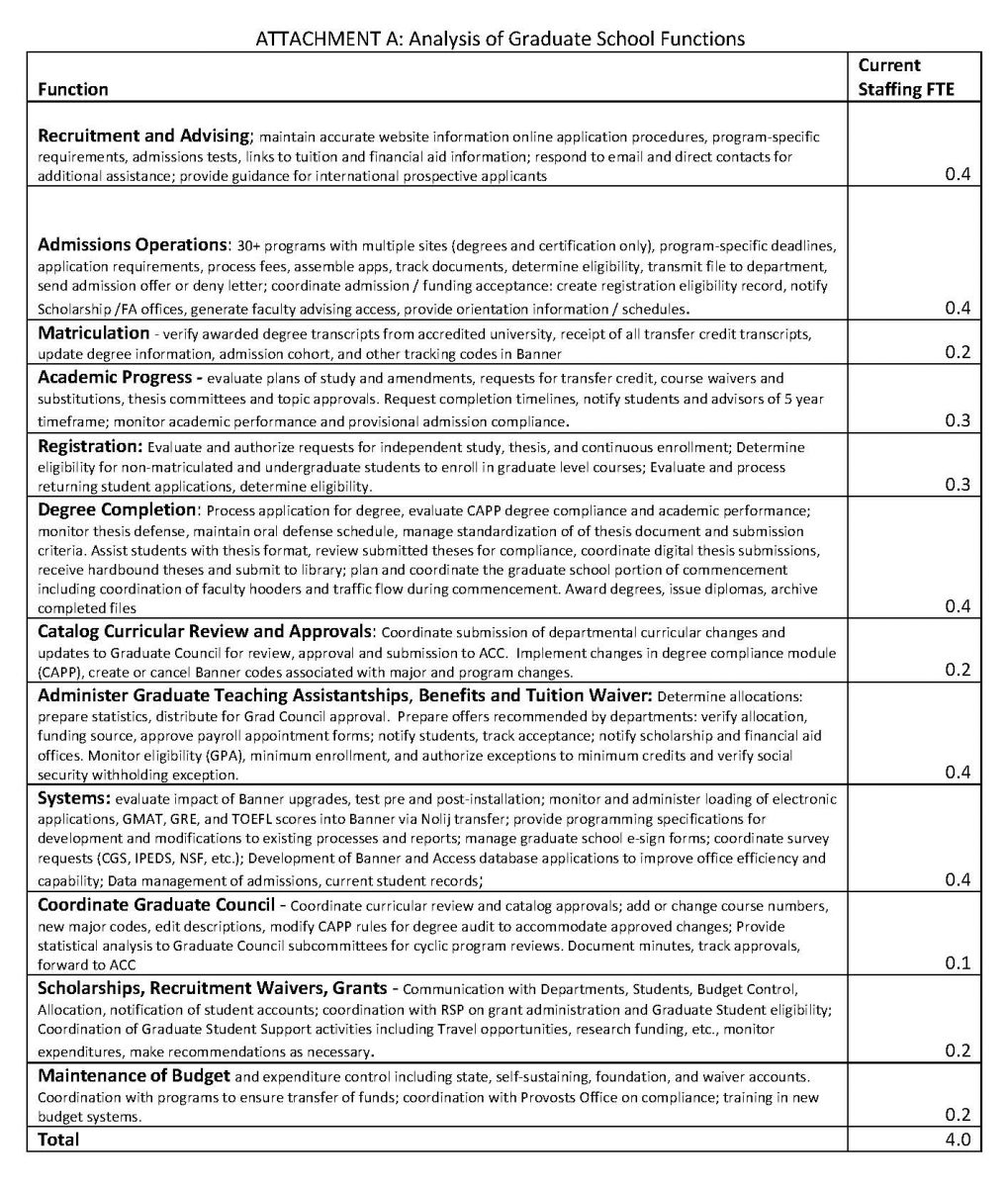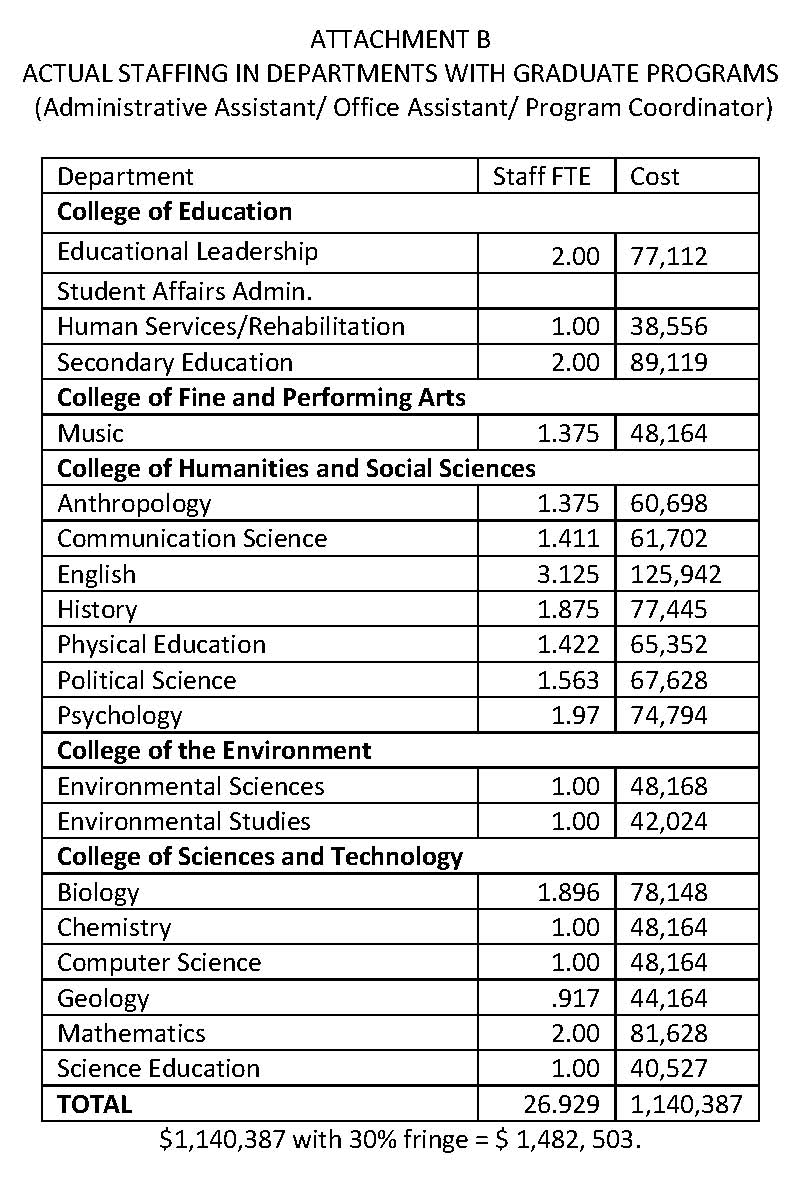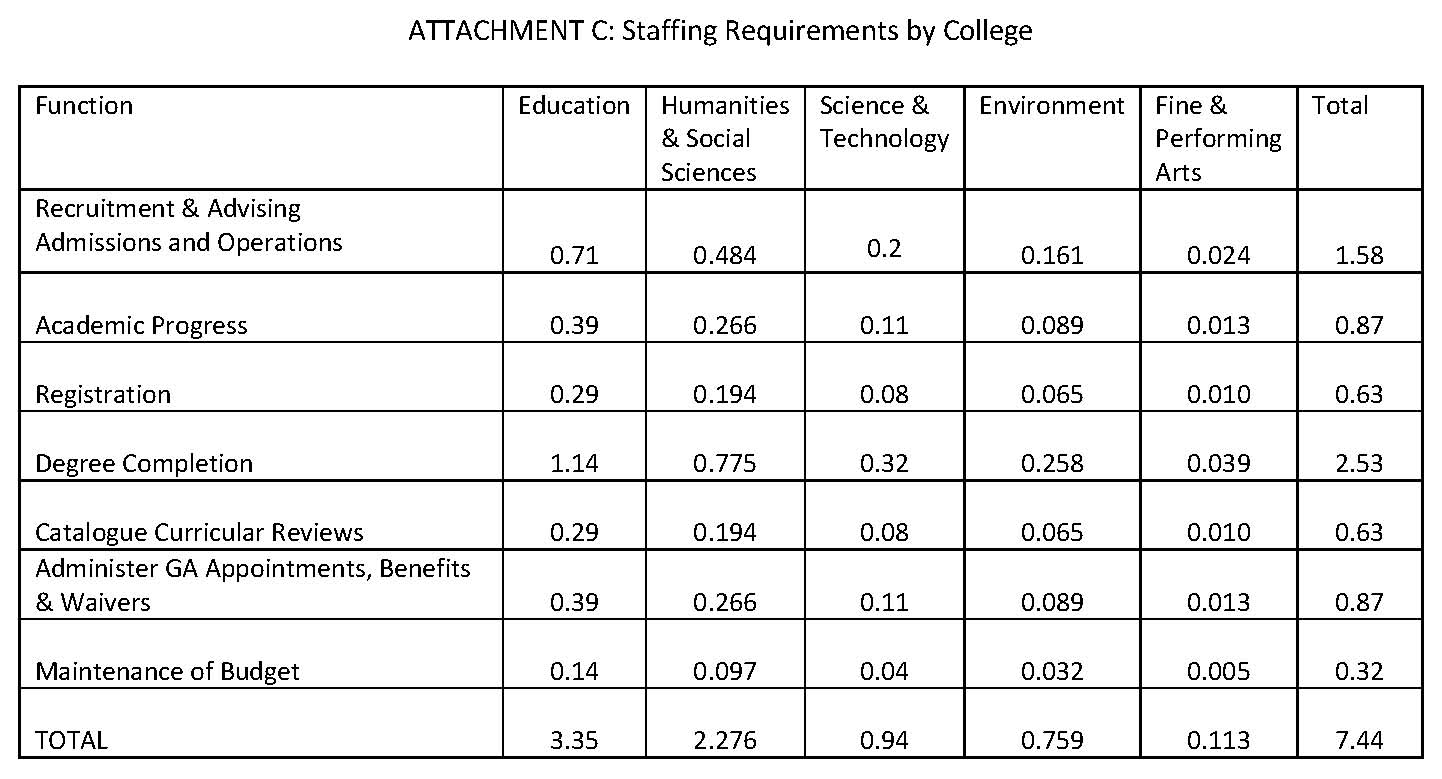You are on CGS' Legacy Site.
Thank you for visiting CGS! You are currently using CGS' legacy site, which is no longer supported. For up-to-date information, including publications purchasing and meeting information, please visit cgsnet.org.
IV. Conclusion
All four methods used to estimate the implications of decentralizing the administration of graduate education, in spite of the conservative assumptions we used, lead to the same conclusion: significant financial costs will result should the University eliminate the Graduate School and distribute its functions to other support units. In addition it is likely that the number of grievances and legal challenges will increase as it is likely that the different programs will not apply the policies in a consistent manner, and this is likely to be costly.
It is my hope that other graduate deans will find some of the methodologies developed in this paper useful in estimating the impact of decentralizing the administration of graduate on their campuses.



Footnotes
1Carole Beere, a Graduate Dean, served as the Chair of the Board of Directors of the Council of Graduate Schools.
2Beere, C. A. (2007, April), Value of the Graduate College, a paper presented at the 63rd Annual Meeting of the Midwest Association of Graduate Schools, Indianapolis.
3Indeed, the first sentence of the first chapter of Adam Smith’s book An Inquiry into the Nature and Causes of the Wealth of Nations attributes increase in productivity to division of labor: “The greatest improvement in the productive powers of labour, and the greater part of the skill, dexterity, and judgment with which it is any where directed, or applied, seem to have been the effects of the division of labour.” [Edwin Cannan, ed. 1904. Library of Economics and Liberty. Retrieved April 11, 2011 from the World Wide Web: http://www.econlib.org/library/Smith/smWN1.html
4Source: State of Washington Department of Personnel.
5The cost allocation study was submitted March 29, 2011 to the Department of Health and Human Services Office of Cost Allocation, the federal office designated to negotiate the indirect cost rates with the University.
6Consider one function, admissions, for example. While application packages for undergraduate admissions are uniform and decisions are made by admission officers, for graduate admissions each program has its own application requirements and some include prior identification of and negotiation with faculty on research areas.
7We calculated this figure on the basis of undergraduate enrollment because departmental administrators serve the needs of those students, while the Graduate School staff serves the needs of graduate students. This calculation is an underestimate since we did not include the cost of the support staff in departments that do not offer graduate programs yet we divide by the number of students In all departments, thus underestimating support staff costs per student. The numbers of students both undergraduate and graduate are those reported by the University in the Common Data Set.
8This, too, is an underestimate since we multiply by the actual fall 2010 enrollment rather than the total enrollment from the Common Data Set of 1,179 which is the number of all graduate students including those who did not register for credits in fall of 2010.
9Staffing is determined from the University budge.
10The functions that would be transferred to the Registrar and to Student Financial resources currently consume 1.50 FTE, or 50%, of Graduate School staff time. Assuming zero cost for these functions under the decentralized system, again underestimates the cost of that system.
11This can be regarded as a major deficiency of decentralization: the universities that have no graduate school are not in the circuit of discussion of current issues in graduate education, have limited access data on innovations and best practices and have no input in policy formation or advocacy for legislation affecting graduate education. Furthermore, they have no single individual whose is focused on such issues.
12We needed to develop the methodologies, collect the data complete the analyses in less than one week.
13Our university has an average of .59 and including it would have lowered the average for centralized graduate schools.




